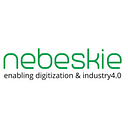The Smart Factory: Utilizing Real-Time Analytics for Maximum Efficiency
The manufacturing industry is rapidly evolving, and the Smart Factory represents a significant change in our approach to managing and optimizing production processes. Real-time analytics is critical for achieving unparalleled operational efficiency in this setting. This post delves into the mechanics of Real-Time Analytics in the Smart Factory, its benefits, and strategies for implementation, providing a comprehensive guide for businesses looking to harness the power of this innovative technology.
Real-Time Analytics
Real-time analytics refers to automatic data collection and analysis across the manufacturing process. Using IoT devices, sensors, and advanced software, Real-Time Analytics provides a moment-by-moment snapshot of production activities, enabling immediate action and decision-making.
What are the Benefits of Real-Time Analytics?
Real-time analytics has several advantages, including:
Enhanced Operational Efficiency: By identifying bottlenecks, predicting potential issues, and reducing machine downtime, Real-Time Analytics significantly improves overall efficiency.
Optimized Product Quality: Continuous monitoring ensures deviations from the desired quality standards are identified and corrected in real time, reducing waste and rework.
Energy and Cost Savings: Real-time analytics provides detailed insights into energy consumption patterns, optimizes energy use, and provides substantial cost savings and environmental benefits.
Improved Safety Measures: Real-time data analysis helps predict equipment failures that could pose safety risks, thereby enhancing workplace safety.
Facilitated Decision Making: With real-time insights, managers and operators can make informed decisions quickly, adapting to changes and opportunities.
How to Implement Real-Time Analytics in Your Factory
To implement Real-Time Analytics in your factory, follow these steps:
1. Define your objectives: Define what you aim to achieve with Real-Time Analytics.
2. Invest in the necessary infrastructure and technology: Invest in IoT devices, sensors, and a robust IT infrastructure capable of handling real-time data.
3. Integrate and deploy the new technologies with your existing machinery and systems.
4. Train your team: Equip your team with the knowledge and skills to effectively utilize Real-Time Analytics.
5. Continuously improve: Establish a culture of continuous improvement, encouraging feedback and innovation from all levels of the organization.
The Future of the Smart Factory
The Smart Factory, powered by Real-Time Analytics, offers unprecedented opportunities for manufacturers to enhance efficiency, quality, and safety. By strategically implementing Real-Time Analytics, businesses can unlock their full potential, setting new benchmarks for operational excellence in the digital age.
For more such articles, please refer the website https://www.nebeskie.com/
